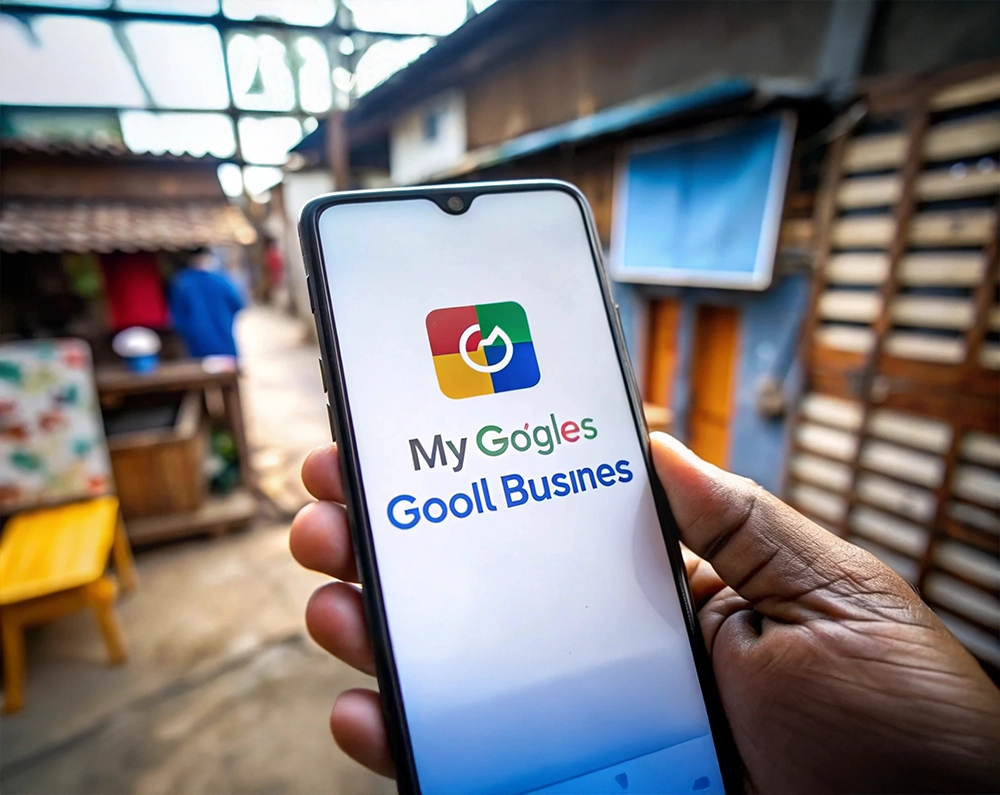Think about the last time you searched for something important—maybe “best laptops for graphic design” or “nearest open dentist.”
Did you scroll through five or six results pages to find what you needed? Or did you click one of the top few links on page one and call it a day?
Most of us stick with the top results—and that’s exactly why search engine positioning can make or break a business.
Digital marketers and business owners obsess over their ranking, but despite the chatter, not everyone understands how to climb those results pages—or even what those rankings really mean.
If you’re asking yourself, what is SEO position and how do you get your website to show up first for the right audience, you’re in the right place.
Getting Real: What Does Search Engine Positioning Actually Mean?
In plain English, search engine positioning is a polished way of saying where your webpages show up in Google’s search results.
It’s not just about whether your site shows up—it’s about how high it ranks when someone searches for terms related to your business. Higher rankings generally mean more visibility, clicks, and conversions.
Let’s say you sell eco-friendly cleaning products. There’s a world of difference between being the #1 organic result for “buy natural cleaning spray online” and floating down at spot #16.
That difference? It’s measured in clicks, customers, revenue, and brand awareness.
So, if you’ve ever caught yourself googling “what is SEO position” and hoping for a clear answer: it’s your website’s ranking in search results for a specific keyword. Everything that gives your page a better spot—that’s search engine positioning in action.
Why Does Search Engine Positioning Matter So Much?
Imagine you own a bakery, would you rather have your cupcakes in a window facing the busiest street or on a lonely shelf in the basement?
The top spots in Google search results are the digital equivalent of that prime storefront window—capturing the majority of traffic and driving significantly more sales.
Top three positions get the majority of clicks. Anything beyond that? It’s tumbleweed territory.
- Here’s why smart businesses sweat over search engine positioning improvement:More visitors: A higher spot means more eyes (and more potential customers).
- Better leads: You attract people who are exactly searching for what you offer, boosting the likelihood of conversion.
- Lower ad spend: Great positioning brings consistent organic traffic—no need to outspend with paid ads.
- Trust and reputation: People believe that if Google ranks you high, you’re probably worth checking out.
- Long-term, sustainable growth: Unlike paid ads, effective search engine positioning builds sustainable traffic that can keep growing over time.
All these serve as concrete, measurable business wins.
Search Engine Positioning vs. SEO: Aren’t They the Same?
They’re related, but not quite the same. Search engine optimization positioning is the process of making sure all that SEO work leads to rankings for specific keywords and pages that match your business priorities.
Yes, SEO covers the groundwork—site speed, mobile-friendliness, links, all that jazz.
But web search engine positioning is about focus. It’s looking at each page, picking a main keyword, and saying, “How do I get this page to break into the top three?”
It’s not enough to just “do SEO.” You need a page-by-page, keyword-driven strategy to pull ahead of competition—something even seasoned marketers sometimes overlook.
The Building Blocks of Strong Search Engine Positioning
Let’s get practical. What steps should you take for search engine positioning improvement—not next year, but starting this month
1. Zero in on the Right Keywords
Stop chasing generic traffic. Take time to discover keywords your customers actually use—especially longer phrases that signal buyer intent, like “affordable marketing automation for dentists” instead of just “marketing software.”
Here’s a tip that works: if you meet your customers in person or on the phone, jot down how they describe your service. Their words often become your best search terms.
Tools like Google Search Console, SEMrush, or AnswerThePublic can be used to find the keywords.
2. Fine-Tune On-Page Elements
Think of your website’s pages as your digital storefront windows.
Make sure your primary keyword naturally appears in all the right places: the meta title, description, first headline (H1), and early in your introduction. Sprinkle related phrases throughout—but skip the word salad. Your goal: clear, helpful, human content.
Break up blocks of text with subheadings, lists, and images. The easier it is for a real person to read, the more likely Google will treat it as valuable too.
3. Serve User Intent, Not Just Algorithms
If someone lands on your page after searching “how to fix a leaky faucet,” are they getting quick, usable steps, or a novel about the history of plumbing? Put yourself in your searcher’s shoes.
Analyze the current top five results for your target keyword. What kind of content is winning? Long-form blog? Product page? FAQ? Google can show you what works.
Pages that offer clear answers, visuals, and practical solutions almost always sail higher over time. That’s search engine positioning at its core—making real people happy, not just the robots.
4. Boost Engagement and Experience
If your page loads slowly or looks terrible on a phone, it doesn’t matter how clever your SEO is—most users are gone in seconds.
Google pays attention to bounce rate and time on site, so focus on snappy load speeds, organized design, and intuitive navigation.
The simple fix: open your site on your own phone or tablet. If you get annoyed with navigation, so will your visitors—and Google.
5. Build Smart Links (Both Ways)
Links are still one of the strongest signals for rankings—and their quality matters now more than ever.
Don’t leave pages stranded. Internally, link to relevant blog posts, product pages, or resources. This keeps visitors clicking and helps bots crawl which is a great signal to search engines.
Externally, attract authentic backlinks by creating content worth sharing and linking to—whether that’s a how-to guide, unique research, or an original twist on common industry advice.
How to Measure Your SEO Position—and What to Do Next
Everyone wants a map for improvement. Here’s a simple, repeatable way to check your search engine positioning and move up the rankings:
- Check your rankings: Use simple tools like Google Search Console or keyword tracking platforms. Find out where your most valuable pages and keywords stand today.
- Spot quick wins: Are any important keywords sitting at spots between 5-15? These are ripe for an easy boost—often just with on-page tweaks (internal linking, better visuals and readability) or fresher content (updated stats, target keyword in headings).
- Update and upgrade: Add new info, polish headlines and meta descriptions, or answer new questions in your field. Don’t be afraid to merge thin pages or cut lagging content. Make sure your content is inclusive, user-focused, and intent-matching.
- Monitor the competition: Who’s outranking you? What’s on their pages that yours lacks—fresher stats, better visuals, more answers, snappier titles? Borrow what makes sense but do it better and make it truly yours.
- Track results: Give it a few weeks, then check progress (keyword position changes, CTR improvements, organic traffic growth and engagement metrics). The best pages in any vertical didn’t land there by accident—they earned it, step-by-step.
Advanced Tactics for “Top Three” Web Search Engine Positioning
Already ranking on page one? Here’s how you inch toward those three golden top spots:
- Snag featured snippets: Format parts of your content to answer search queries in a clear, concise paragraph, list, or table. Google loves to “borrow” these for answer boxes.
- Boost for local: Use city names, directions, “near me” phrases, and local content if your business is location-based.
- Lean on expertise: Content that shows depth, originality, and personal experience often ranks above generic, surface-level pages. Add original case studies, unique industry graphics, and firsthand advice—it helps signal trust and authority.
- Stay updated: Revisit and refresh your main pages every quarter so nothing goes stale—and Google knows you’re active, relevant and improving.
Avoid These Search Engine Positioning Mistakes
Even seasoned pros can slip up. Watch out for these:
- Obsessing over too many keywords per page (it just dilutes your focus).
- Ignoring thin or duplicate content.
- Forgetting technical basics like site speed, crawl errors, and mobile-responsiveness.
- Letting pages stagnate while competitors update, improve, and leapfrog you over time.
Summing Up: Search Engine Positioning Is Ongoing
Ask any long-time SEO or digital marketer—search engine optimization positioning isn’t something you “set and forget.”
The internet’s a living thing. Competitors are always updating, Google’s algorithms keep shifting, and searchers’ habits change over time.
But here’s the upside: if you stay consistent—spot-checking rankings, updating content, listening to your audience, and focusing on quality—you can win.
Your traffic grows not just for next week, but year after year. That’s what great search engine positioning delivers: visibility, authority, and a steady stream of customers.
And if you ever feel lost in the weeds, remember this: every number one spot you see started right where you are now.
The difference? Someone got focused, tracked what worked, and kept improving. That next marketing success could be yours.





